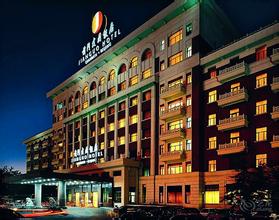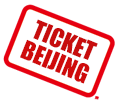
About Liyuan Theatre Opera Show
Beijing Liyuan Theatre (inside Qianmen Jianguo Hotel) has real Peking Opera and other folk performances every night at 19:30. One does not have to worry about the linguistic difficulties of Chinese opera and drama, as both make heavy use of pantomime. Opera usually has a subtitle board showing the translation. Therefore, they are easy to understand. Liyuan Theatre is the most prestigious performance venue for Peking Opera. From the traditional performance stage Bai Xian Table (the old-fashioned square table can accommodate 8 people) to the unique facial makeup, the theater reflects the characteristics of old Beijing. The theater has 1000 seats.
Before the show starts, you can visit the performers’ dressing room to see their makeup process. In addition, you can also buy various souvenirs related to Peking Opera here. Waiters and waitresses dressed in Tang costumes (traditional Chinese clothing) will pour tea for you through a long-mouthed teapot while introducing Peking Opera in English. Your knowledge of old Beijing will become a pleasant, artistic enjoyment. Many foreign leaders and officials who visited Beijing left footprints at the theater.
Every year, many domestic and foreign tourists come here to enjoy the wonderful Peking Opera. Liyuan Theater has become a window to Beijing and a bridge between Beijing and the world. Before and after the show, you can enjoy Chinese cuisine at the hotel’s Chinese restaurant, especially the famous Peking duck.
Beijing China National Opera Peking Opera enjoys great popularity among Chinese theater audiences and greatly appeals to foreign audiences. Its origins can be traced back to 1790 when four local opera troupes from Anhui Province came to Beijing to perform at the Qing court.
In 1828, they began to perform jointly with local opera troupes in Hubei in the Qing court. Influenced by the local dialect of Beijing, borrowing from each other, and borrowing from the artistic styles and expressions of opera from other places, especially singing, these joint performances developed into a new opera with distinctive characteristics during the Xianfeng Emperor (1850s) in the space of two decades, namely Peking Opera. Famous Peking Opera artists during this period include Cheng Changgeng, Yu Sansheng, and Zhang Erkui.
Beijing Peking Opera Academy was founded in 1979, consisting of four Peking Opera troupes headed by Mei Lanfang, Shang Xiaoyun, Cheng Yanqiu and Xun Huisheng, and Ma Lianliang, Tan Fuying, Tan Fuying, Tan Fuying, Tan Fuying, Tan Wanwan, Zhang Junqiu, Qiu Shengrong, Zhao Yanxia.
Beijing Opera Academy enjoys a high reputation at home and abroad, with many famous performers of different artistic genres and operas; it is a national Peking Opera troupe and one of the largest performing arts troupes in China.
It draws heavily on a variety of artistic expressions of the Chinese nation. Peking Opera is a complex form of performing arts consisting of music, singing, recitation, dance, fine arts, martial arts, and acrobatics. The stage is extended in three directions to face the audience.
It makes its gross exaggeration and unique symbolism possible. Although there is no scenery on stage, the performers’ physical movements or props’ holding indicates the play’s background. For example, taking a horsewhip is riding a horse, taking an oar is riding a boat, and the time when the drama takes place is also freely handled.
Freedom to deal with changes in time and background is a prominent feature of Peking Opera. A few rings of Geng Gu (old Chinese punctual night clocks) mean a long night. Thus, the change in the background is performed in an instant. Peking Opera follows a basic principle in performance: depending on the needs of the opera, the presentation may be lengthy or sketchy. Therefore, enough time can be given to fully unfold the dramatic twist of the event and the complex emotions in the depths of the characters in the play.
